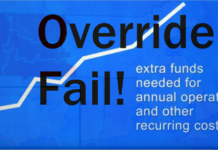It is hard to imagine the Massachusetts economy getting any better. It’s shining brightly. To be sure, the state faces structural problems like housing and energy costs, transportation and uncertainty over the effects of tax policy. Add to the list of concerns, slower tax revenues (due to a poorly performing stock market last year) and the risks facing the state’s commercial property sector.
But right now, whether through good fortune or policy choices, Massachusetts has emerged as an economic powerhouse. That is if one considers the conventional indicators such as the unemployment rate, state gross domestic product and job creation.

“The condition of the Massachusetts economy looks good heading into the latter part of 2023,” according to the editorial board of MassBenchmarks, a joint publication of UMass’s Donahue Institute and the Federal Reserve Bank of Boston. “Current indicators are solid and have defied expectations on the upside for several quarters running.”
MassBenchmarks, notes that the Commonwealth is a leading state for net jobs growth. “Most major industry sectors are experiencing payroll jobs growth through the first half of 2023, showing that the economic improvements in the state are broadly based.”
For example, the state’s unemployment rate in July checked in at 2.6 percent with the local economy garnering 90,300 jobs over the previous 12 months. The national rate for the same period is 3.5 percent.
That growth in jobs allowed the state to recover jobs lost during COVID. In fact, as of June the state had 3.77 million jobs, 25,000 more than the previous pre-pandemic peak in February 2020.
A closer look reveals that employment in Boston-Cambridge-Nashua, NH metropolitan region increased by 81,000 jobs.
Massachusetts is also generating an above-national-average rate in economic activity. After trailing national economic growth for a few quarters in 2022, Massachusetts real GDP has “swung back and has grown faster than U.S. averages in both the fourth quarter of 2022 and the first two quarters of 2023.” The growth is remarkable given the persistence of inflation, the lingering effects on supply chains, and the war in Ukraine.
Moving forward, MassBenchmarks thinks the state’s GDP will hit a high of 4.0 percent in the second quarter (April, May and June 2023) before trailing off toward the end of the year. Such an estimate is in line with economists’ estimates for the U.S. economy later this year.
On the other hand, as economists are fond of saying, there are potential downsides on the horizon. There’s always talk about what higher interest rates mean. But what also matters to economists is the labor force participation(LFP) rate. The labor force participation rate refers to the percentage of people age 16 and older who are in the labor force. One reason that the state’s unemployment rate has trended downward is because the state’s labor force declined by 30,000. This decline is often attributed to the state’s aging population as baby boomers retire.
For example, a declining labor participation rate could indicate fewer people of working age who are looking for employment. That makes the labor market tight as employers scramble for the fewer workers available thus increasing labor costs.
The lower LPR is one reason why policy makers and the economists at MassBenchmarks emphasize worker retraining and removing unnecessary obstacles to employment like overly restrictive occupational licensing laws.
Soft landings and recessions are always hard to predict. Nonetheless, MassBenchmarks’ economists believe that “even with slower growth expected on the horizon, Massachusetts has the assets to better position itself for the future and should not delay in acting now on measures to grow its labor force.”
But for right now, most states would like to bask in Massachusetts’s glowing numbers.
Frank Conte is editor and publisher of EastBoston.com. A version of this article originally appeared as an unsigned editorial in the Wakefield Daily Item.
















